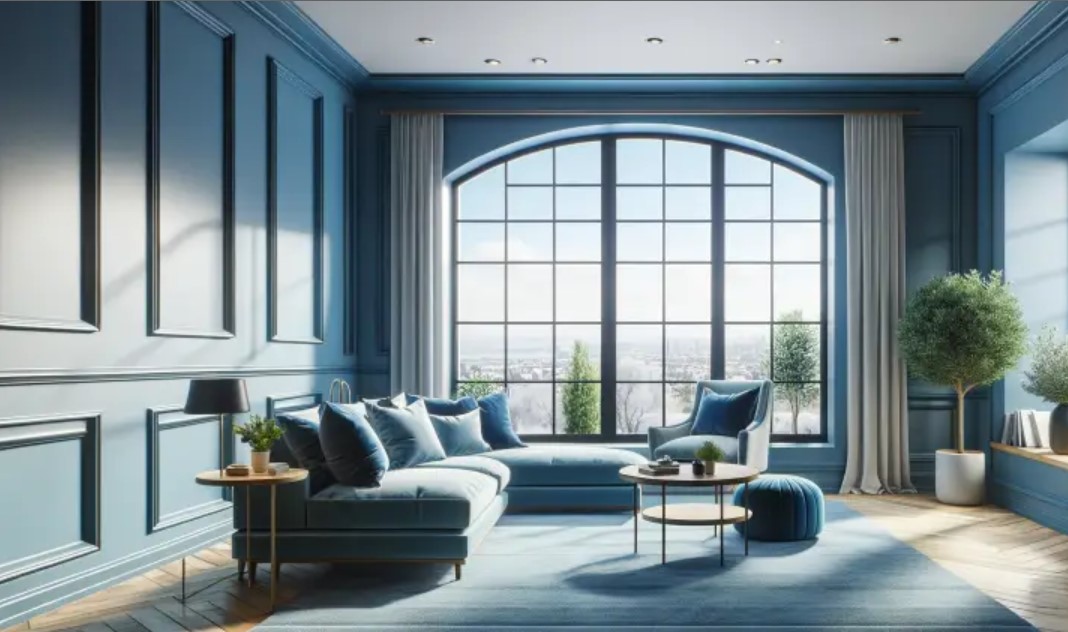As we look forward to 2024, home decor is taking exciting new directions that promise to transform living spaces into personal sanctuaries of style and comfort. Here are the top 15 home decor ideas and trends for 2024 that will help you stay ahead of the curve and create a home that is both contemporary and timeless.
1. Sustainable and Eco-Friendly Decor
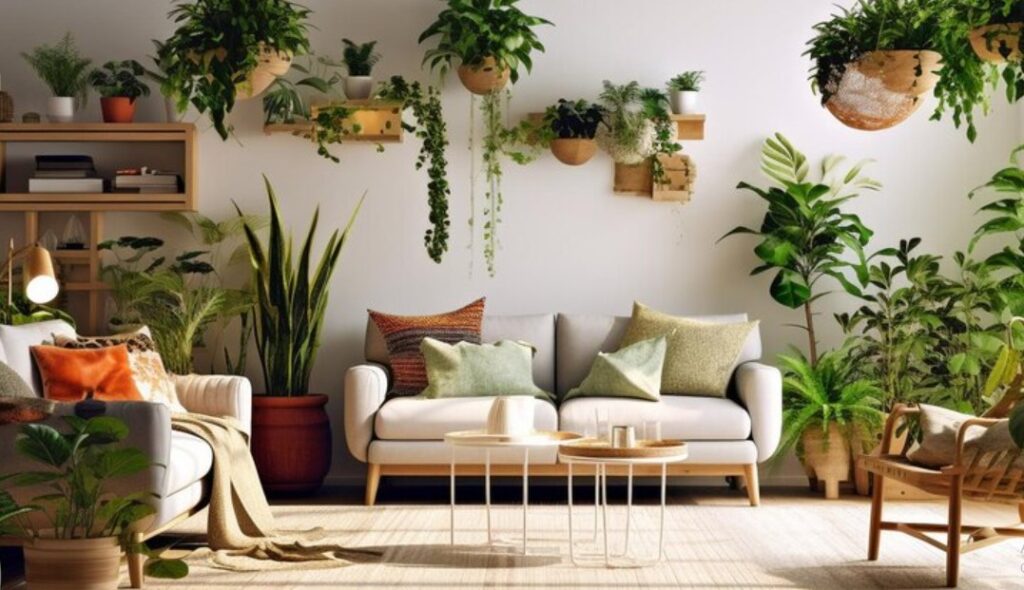
Sustainability continues to be a major trend in 2024. More homeowners are opting for eco-friendly materials and sustainable practices in their home decor.
Recycled and Upcycled Furniture
Incorporating furniture made from recycled and upcycled materials not only reduces waste but also adds unique character to your home. Look for pieces made from reclaimed wood, recycled metals, and sustainable fabrics.
Natural and Organic Textiles
Choose organic cotton, linen, and wool for your soft furnishings. These materials are not only sustainable but also durable and comfortable.
2. Biophilic Design
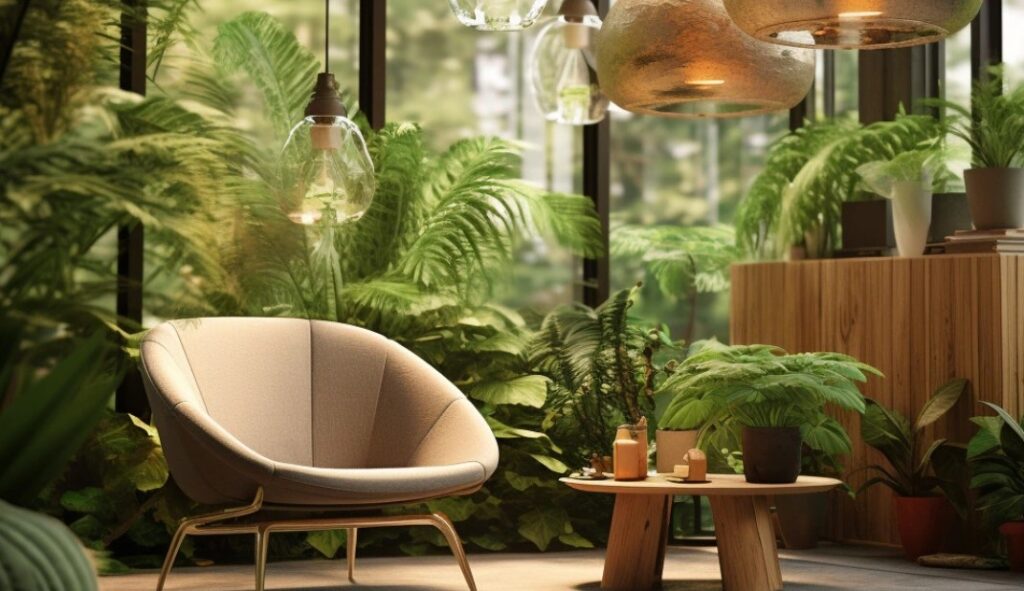
Biophilic design focuses on integrating natural elements and materials into the built environment to create spaces that enhance our connection with nature. This approach not only improves our well-being but also promotes environmental sustainability. Here are the key principles and benefits of biophilic design:
Key Principles of Biophilic Design:
- Natural Light: Maximizing natural light through large windows, skylights, and open spaces to reduce reliance on artificial lighting and enhance mood and productivity.
- Natural Materials: Incorporating natural materials such as wood, stone, bamboo, and clay into architectural and interior design elements to evoke a sense of harmony and connection with nature.
- Indoor Plants: Integrating living plants into interior spaces to improve air quality, regulate humidity, and create a calming atmosphere. Vertical gardens, plant walls, and potted plants are common features.
- Views of Nature: Providing views of natural landscapes, green spaces, or water features from interior spaces to foster a sense of tranquility and connection with the outdoors.
- Water Features: Incorporating water elements such as indoor fountains, ponds, or waterfalls to evoke a sense of calmness and relaxation.
- Natural Shapes and Forms: Using organic shapes, patterns, and textures inspired by nature in architectural details, furniture design, and decor to create a visually pleasing and harmonious environment.
- Biophilic Patterns: Incorporating patterns found in nature, such as fractals, leaf patterns, or animal prints, into textiles, wallpapers, and artwork to evoke a sense of natural beauty and diversity.
- Dynamic and Sensory Spaces: Creating spaces that stimulate multiple senses, such as soundscapes of nature, tactile materials, and natural scents, to enhance overall well-being and cognitive function.
Benefits of Biophilic Design:
- Improved Well-being: Biophilic environments have been shown to reduce stress, anxiety, and fatigue while improving mood, creativity, and cognitive function.
- Enhanced Productivity: Access to natural light and views of nature can increase productivity and concentration levels among occupants.
- Healthier Indoor Air Quality: Plants contribute to cleaner indoor air by filtering pollutants and increasing oxygen levels.
- Sustainable Design: Using natural materials and passive design strategies reduces energy consumption and promotes environmental sustainability.
- Increased Connectivity: Biophilic design fosters a deeper connection with nature, promoting environmental stewardship and a sense of responsibility towards the natural world.
Incorporating biophilic design principles into residential, commercial, and public spaces can create healthier, more sustainable, and aesthetically pleasing environments that benefit both occupants and the planet.
3. Bold Colors and Patterns
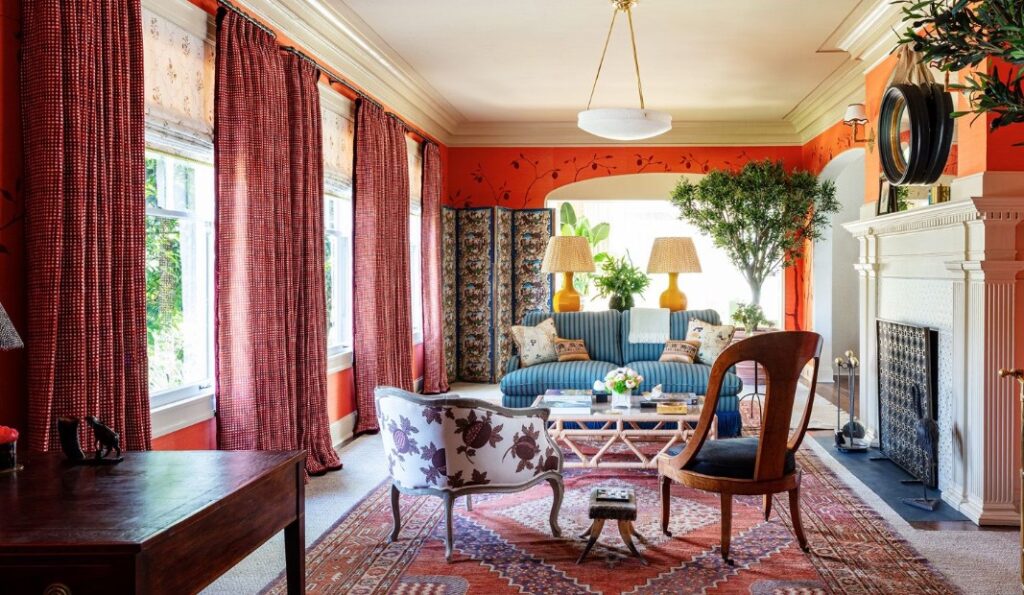
While neutral tones have dominated home decor for years, 2024 is all about embracing bold colors and patterns. These vibrant elements can make a dramatic statement and infuse your home with personality.
Statement Walls
Create a statement wall with bold wallpaper or a vibrant paint color. This can add depth and interest to any room.
Mix and Match Patterns
Don’t be afraid to mix and match patterns. Combine florals, geometrics, and abstracts to create a dynamic and eclectic look.
4. Multifunctional Spaces
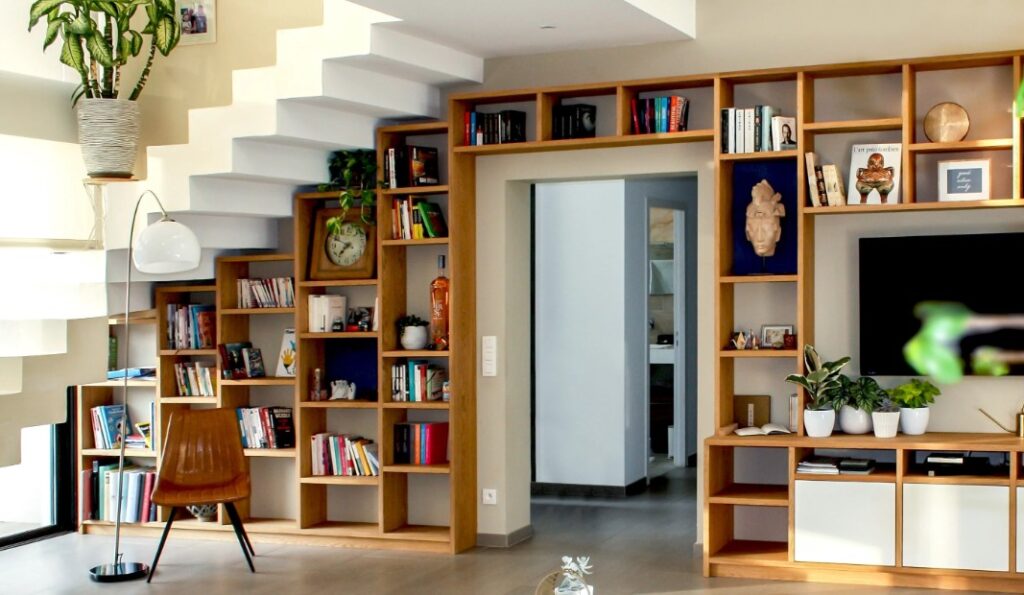
As homes become more versatile, multifunctional spaces are essential. These areas can adapt to different needs and activities, making your home more functional and efficient.
Convertible Furniture
Invest in convertible furniture like sofa beds, extendable dining tables, and modular shelving units. These pieces can easily transform to accommodate various uses.
Home Office Integration
With more people working from home, integrating a home office into your living space is a practical trend. Look for stylish and functional office furniture that blends seamlessly with your decor.
5. Minimalist Aesthetics
Minimalism remains a popular trend in 2024. This approach focuses on simplicity, functionality, and a clutter-free environment.
Clean Lines and Simple Forms
Choose furniture and decor with clean lines and simple forms. This creates a sleek and modern look that is easy to maintain.
Neutral Color Palettes
Use a neutral color palette to create a calm and serene atmosphere. Shades of white, beige, and gray can make your space feel open and airy.
6. Smart Home Technology
Smart home technology has revolutionized modern living by integrating automation, connectivity, and convenience into residential spaces. From enhancing security to optimizing energy efficiency, smart home devices and systems offer numerous benefits. Here’s an overview of smart home technology and its impact on daily life:
Key Components of Smart Home Technology:
- Home Automation: Smart home devices automate tasks such as lighting, heating, ventilation, air conditioning (HVAC), and appliances. This automation can be controlled remotely via smartphone apps or programmed schedules.
- Voice Control: Voice-activated assistants like Amazon Alexa, Google Assistant, and Apple Siri enable hands-free control of smart devices. Users can issue commands for tasks like adjusting thermostats, playing music, or dimming lights.
- Security Systems: Smart security systems include video doorbells, surveillance cameras, and smart locks. They provide real-time alerts, remote monitoring, and integration with other smart devices for enhanced home security.
- Energy Management: Smart thermostats and energy monitors optimize energy consumption by adjusting temperatures based on occupancy and weather conditions. They provide insights into energy usage and enable cost savings.
- Entertainment and Media: Smart TVs, streaming devices, and audio systems offer seamless integration with online content and streaming services. Users can control entertainment options through their smartphones or voice commands.
- Appliances: Smart appliances such as refrigerators, ovens, and washing machines offer features like remote monitoring, energy efficiency, and personalized settings for improved convenience and efficiency.
- Health and Wellness: Smart home technology includes devices for monitoring health metrics, like fitness trackers and smart scales. Some systems integrate with medical devices to provide continuous health monitoring.
- Connected Lighting: Smart lighting systems offer customizable lighting options, energy efficiency, and remote control capabilities. They can adjust brightness, color temperature, and ambiance based on user preferences or schedules.
Benefits of Smart Home Technology:
- Convenience: Automation and remote control capabilities simplify daily tasks and routines, enhancing convenience for homeowners.
- Energy Efficiency: Smart devices optimize energy usage, reducing utility bills and environmental impact through efficient heating, cooling, and lighting solutions.
- Security: Enhanced security features provide peace of mind with real-time monitoring, alerts, and remote access to surveillance footage and door controls.
- Accessibility: Voice control and mobile apps make it easier for individuals with disabilities or mobility issues to control devices and manage home environments.
- Customization: Users can personalize settings and preferences for lighting, temperature, and entertainment, creating tailored experiences that suit their lifestyle.
- Safety: Smart home technology can detect hazards such as smoke, carbon monoxide, and water leaks, triggering alerts and emergency responses to mitigate risks.
- Resale Value: Homes equipped with smart technology features may have higher resale value and appeal to tech-savvy buyers.
Challenges and Considerations:
- Compatibility: Ensure compatibility among different smart devices and platforms to avoid connectivity issues and optimize functionality.
- Privacy and Security: Protect personal data and secure smart devices against potential cyber threats and unauthorized access.
- Cost: Upfront costs for smart devices and installation may vary, though long-term savings in energy efficiency and convenience can offset initial investments.
Smart home technology continues to evolve, offering innovative solutions to enhance comfort, efficiency, and security in residential environments. Whether integrating basic automation or advanced systems, homeowners can tailor smart technology to meet their specific needs and preferences for modern living.
7. Vintage and Retro Styles
Vintage and retro styles are making a comeback in 2024. These trends bring a sense of nostalgia and charm to modern homes.
Mid-Century Modern Furniture
Mid-century modern furniture is timeless and elegant. Look for pieces with sleek lines, tapered legs, and organic shapes.
Retro Accents
Incorporate retro accents like bold prints, colorful accessories, and vintage lighting fixtures to add a playful touch to your decor.
8. Luxurious Textures
Adding luxurious textures can make your home feel more comfortable and inviting.
Velvet and Silk Fabrics
Use velvet and silk for upholstery, cushions, and drapes. These fabrics add a touch of luxury and sophistication.
Textured Wall Treatments
Consider textured wall treatments like grasscloth wallpaper or plaster finishes to add depth and interest to your walls.
9. Personalized Spaces
Personalization is key in 2024. Create spaces that reflect your unique style and personality.
Custom Artwork
Display custom artwork or photographs to make your home feel more personal and meaningful.
DIY Projects
Incorporate DIY projects into your decor. Handmade items add a personal touch and showcase your creativity.
10. Statement Lighting
Statement lighting is an essential element of modern home decor. It not only illuminates your space but also serves as a decorative feature.
Chandeliers and Pendants
Choose chandeliers and pendant lights that make a bold statement. These fixtures can serve as focal points in any room.
Layered Lighting
Use layered lighting to create different moods and enhance the functionality of your space. Combine ambient, task, and accent lighting for a well-lit home.
11. Outdoor Living Spaces
Outdoor living spaces are becoming an extension of the home. Create comfortable and stylish areas for relaxation and entertainment.
Outdoor Furniture
Invest in durable and stylish outdoor furniture. Look for pieces made from weather-resistant materials that can withstand the elements.
Fire Pits and Outdoor Kitchens
Add features like fire pits and outdoor kitchens to enhance your outdoor living space. These additions can make your outdoor area more functional and enjoyable.
12. Artisanal and Handmade Decor
Artisanal and handmade decor adds a unique and authentic touch to your home. These pieces often have a story behind them, making them more meaningful.
Handcrafted Furniture
Look for handcrafted furniture made by local artisans. These pieces are often of higher quality and add a personal touch to your decor.
Unique Accessories
Incorporate unique accessories like handmade ceramics, woven baskets, and textile art to add character and charm to your space.
13. Maximalist Decor
Maximalism is all about embracing bold colors, patterns, and eclectic styles. This trend encourages creativity and self-expression.
Layered Textures and Patterns
Layer textures and patterns to create a rich and dynamic look. Mix different materials and prints to add depth and interest.
Curated Collections
Display curated collections of art, books, and decor items. These collections can tell a story and make your home feel more personal.
14. Japandi Style
Japandi, a fusion of Japanese and Scandinavian design, creates serene, functional, and minimalist interiors. This trend emphasizes simplicity, natural materials, and a calming color palette, perfect for those seeking a peaceful and elegant living space. Here’s how to achieve the Japandi look in your home.
Natural Materials and Textures
Japandi style highlights the beauty of natural materials. Wood, bamboo, rattan, and stone are essential elements. Choose furniture and decor items made from these materials to create a warm and inviting atmosphere. Textured fabrics like linen, cotton, and wool add depth and coziness to the space.
Neutral and Earthy Color Palette
A muted color palette is a hallmark of Japandi design. Soft neutrals like white, beige, and gray provide a calming backdrop. Earthy tones such as muted greens, browns, and terracotta add warmth and depth. Use these colors on walls, furniture, and accessories to create a harmonious and balanced look.
Minimalist Aesthetic
Less is more in Japandi decor. Focus on clean lines, uncluttered spaces, and functional furniture. Avoid excessive ornamentation and keep decor items to a minimum. Each piece should serve a purpose and contribute to the overall simplicity of the space.
Low-Profile Furniture
Furniture in Japandi style tends to be low-profile and functional. Choose pieces with clean lines and simple shapes. Tatami mats, low wooden tables, and floor cushions are great options for creating a relaxed and grounded atmosphere. Scandinavian-style furniture with its sleek and functional design also fits perfectly.
Wabi-Sabi Philosophy
Embrace the Japanese concept of wabi-sabi, which celebrates imperfection and the beauty of aging. Incorporate items with a handmade, rustic feel, and don’t shy away from pieces with visible wear and tear. This philosophy adds character and authenticity to your home.
Functional and Thoughtful Decor
Japandi decor is all about functionality and mindfulness. Choose decor items that are both beautiful and useful. Think of elegant storage solutions, simple yet striking artwork, and well-crafted ceramics. Each piece should add value and purpose to your living space.
Indoor Plants
Bringing nature indoors is essential in Japandi style. Choose simple, low-maintenance plants like bonsai trees, ferns, or succulents. These plants not only purify the air but also add a touch of greenery and tranquility to your home.
Soft Lighting
Lighting plays a crucial role in creating a cozy and inviting atmosphere. Opt for soft, diffused lighting using paper lanterns, pendant lights, and floor lamps. Natural light should be maximized, so keep window treatments minimal and airy.
Natural Elements and Accents
Incorporate natural elements such as stones, pebbles, and wooden accessories. Use these elements in decorative bowls, vases, or as part of a Zen garden setup. These accents add a touch of nature and serenity to your home.
Multi-Functional Spaces
Japandi style often features multi-functional spaces that adapt to various needs. Think of modular furniture, foldable tables, and versatile storage solutions. This approach maximizes space and maintains the minimalist aesthetic.
Japandi style home decor offers a perfect blend of Japanese minimalism and Scandinavian functionality. By focusing on natural materials, a muted color palette, and functional, thoughtful decor, you can create a serene and elegant living space. Embrace the principles of wabi-sabi and the beauty of simplicity to transform your home into a tranquil haven.
15. Multi-Generational Living
Multi-generational living spaces are designed to accommodate different age groups and lifestyles. This trend promotes flexibility and inclusivity.
Flexible Floor Plans
Design flexible floor plans that can adapt to changing needs. Consider open-plan layouts and multifunctional rooms.
Accessible Design Features
Incorporate accessible design features like wider doorways, step-free entrances, and grab bars. These features make your home more accommodating for all family members.
By embracing these top home decor ideas and trends of 2024, you can create a living space that is stylish, functional, and uniquely yours. Whether you prefer minimalist aesthetics, bold colors, or sustainable materials, there’s something for everyone in this year’s trends.
